|
Unit 2: Finding
your dream home
Lesson 1: Deciding what you want
Think about the kind of house you want
and where you would like to live. If you know what you want,
it will be easier to find a house that is right for you.
The following questions should help you.
Do you want a new home or an older home?
New houses can be more expensive than
old houses, but they are usually better insulated and have
better heating systems. Maintenance costs are often lower
for a new home. However, older homes may be larger and offer
more special features for less money.
Where do you want to live?
Location is important. Many people need
to live near their workplace or near public transportation.
For families with children it is important to live in an
area that has good schools. Others may want to be close
to stores.
What size house do you need?
Consider how many rooms your family will
need. You may want a house that has only one floor or level.
Will you need to have a basement or an attic? In addition,
the home should be large enough for your family in five
years. If you want a large yard, remember that more land
will increase the price of your house.
What special features are important to
you?
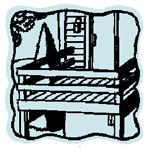 |
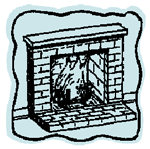 |
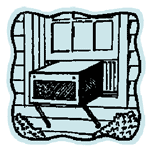 |
| Deck |
Fireplace |
Air-conditioning |
Which style of house do you like?
 |
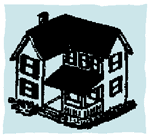 |
 |
| Ranch |
Victorian |
Colonial
|
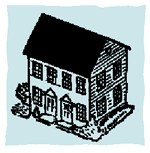 |
 |
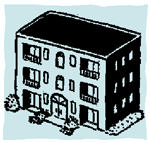 |
|
Duplex
|
Townhouse
|
Apartment |
What type of exterior do you prefer?
Types of ownership
Most people buy a single-family home with
land. However, there are other types of ownership, including
the following:
Condominium (condo) — The
buyer owns a home, usually a single unit in a multiunit
building. However, all the buyers share the ownership of
the hallways, elevators, laundry, recreation rooms, and
other common areas. In addition, they pay a monthly charge
for maintenance and operations.
Cooperative (co-op) — The
buyer owns a share of the building corporation but does
not own the apartment. The share is equal to the value of
a single apartment. The owner can stay in the apartment
because of a lease or other occupant agreement. The cooperative
owner must pay a monthly maintenance charge and a part of
the mortgage payment for the whole building. The cooperative
board or committee must give permission before new people
can buy a share and move into the building.
Previous
Page | Next Page
|